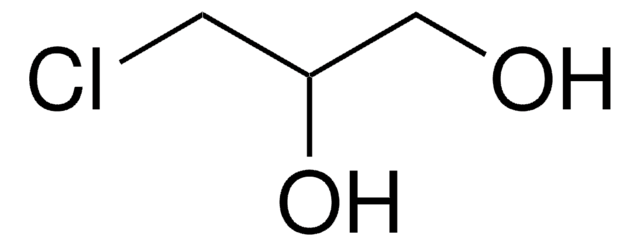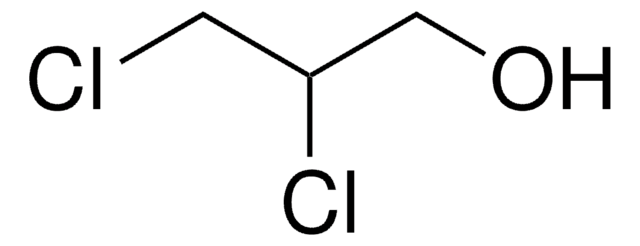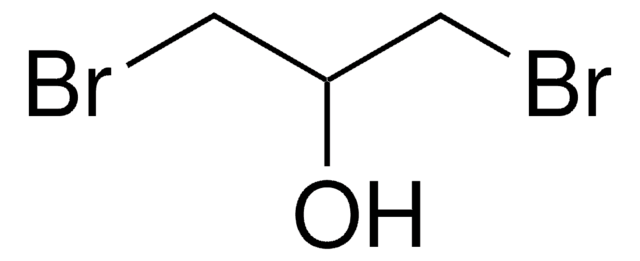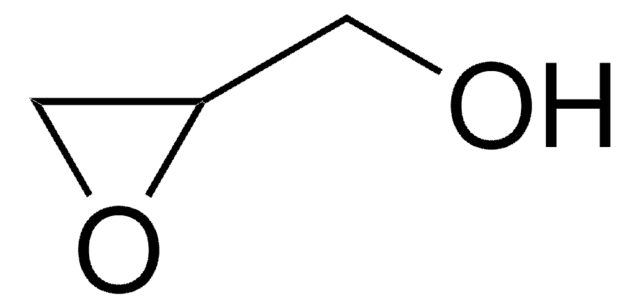184489
1,3-Dichlor-2-propanol
97%
Synonym(e):
Glycerol-α,γ-dichlorhydrin
About This Item
Empfohlene Produkte
Qualitätsniveau
Assay
97%
Form
liquid
Brechungsindex
n20/D 1.483 (lit.)
bp
174.3 °C (lit.)
mp (Schmelzpunkt)
−4 °C (lit.)
Löslichkeit
water: soluble 10 part
alcohol: miscible
diethyl ether: miscible
Dichte
1.363 g/mL at 20 °C
1.351 g/mL at 25 °C (lit.)
Funktionelle Gruppe
chloro
SMILES String
OC(CCl)CCl
InChI
1S/C3H6Cl2O/c4-1-3(6)2-5/h3,6H,1-2H2
InChIKey
DEWLEGDTCGBNGU-UHFFFAOYSA-N
Suchen Sie nach ähnlichen Produkten? Aufrufen Leitfaden zum Produktvergleich
Allgemeine Beschreibung
1,3-Dichloro-2-propanol is used as a pharmaceutical intermediate and solvent for paints, lacquers, and epoxy resins.
Anwendung
- Hydroxyl-N-tosylcyclams via sodium ethoxide catalyzed cyclization reaction with di(poly)-N-tosylamides.
- (R)-Epichlorohydrin using biocatalysts.
- 1,3-dichloropropene, a soil fumigant, and synthetic glycerol.
It can also be used as an intermediate in the production of epoxy resins, as well as a solvent for hard resins and nitrocellulose.
Signalwort
Danger
H-Sätze
Gefahreneinstufungen
Acute Tox. 3 Oral - Acute Tox. 4 Dermal - Carc. 1B
Lagerklassenschlüssel
6.1A - Combustible acute toxic Cat. 1 and 2 / very toxic hazardous materials
WGK
WGK 3
Flammpunkt (°F)
186.8 °F - closed cup
Flammpunkt (°C)
86 °C - closed cup
Persönliche Schutzausrüstung
Eyeshields, Faceshields, Gloves, type ABEK (EN14387) respirator filter
Hier finden Sie alle aktuellen Versionen:
Besitzen Sie dieses Produkt bereits?
In der Dokumentenbibliothek finden Sie die Dokumentation zu den Produkten, die Sie kürzlich erworben haben.
Kunden haben sich ebenfalls angesehen
Unser Team von Wissenschaftlern verfügt über Erfahrung in allen Forschungsbereichen einschließlich Life Science, Materialwissenschaften, chemischer Synthese, Chromatographie, Analytik und vielen mehr..
Setzen Sie sich mit dem technischen Dienst in Verbindung.








